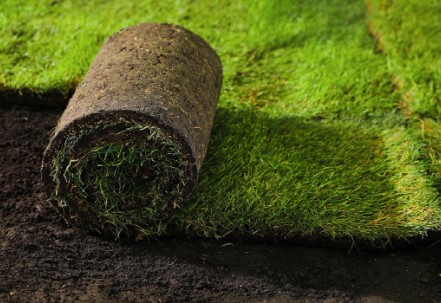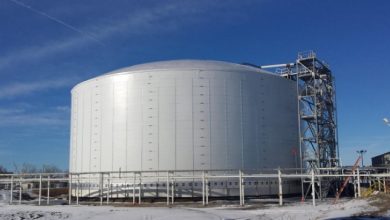
Maintaining Your Sod Grass: Essential Tips for Long-Term Success
Maintaining Your Sod Grass: Essential Tips for Long-Term Success
Sod grass installation is a popular choice for homeowners seeking an instant and lush lawn. However, maintaining the beauty and health of your sod grass requires consistent effort and proper care. By following these essential tips, you can ensure the long-term success of your sod grass and enjoy a vibrant, healthy lawn for years to come.
Watering Techniques
1. Establishing a Watering Schedule
Proper watering is crucial for the establishment and ongoing health of your sod grass. Newly installed sod requires more frequent watering to promote root development. As the grass matures, adjust your watering schedule accordingly. Consider factors such as weather conditions, soil type, and drainage when determining the optimal watering frequency.
2. Proper Watering Depth
Water your sod grass deeply and infrequently to encourage deep root growth. Aim to water to a depth of 6-8 inches, ensuring the soil is saturated without causing excessive runoff or puddling. This method encourages the roots to grow deeper, making your lawn more drought-tolerant and resilient.
3. Avoiding Overwatering
Overwatering can be just as detrimental as underwatering. Excessive moisture can lead to fungal diseases, moss growth, and shallow root systems. Monitor your lawn for signs of overwatering, such as yellowing grass, soggy soil, and standing water. Adjust your watering schedule accordingly to prevent these issues.
Mowing Best Practices
1. Ideal Mowing Height
Different grass types have varying ideal mowing heights. For most sod grasses, it’s recommended to maintain a mowing height of 2-3 inches. Cutting grass too short can stress the plants and make them more susceptible to disease, drought, and weed infestations. Consult with a professional or refer to the specific grass type recommendations for optimal mowing height.
2. Frequency of Mowing
Mow your lawn regularly, removing no more than one-third of the grass blade’s height at a time. Frequent mowing encourages dense, healthy growth and prevents the grass from becoming overgrown and unsightly. Adjust your mowing frequency based on the growth rate of your sod grass, which can vary depending on factors like temperature, rainfall, and fertilization.
3. Sharp Mower Blades
Dull mower blades can tear and shred the grass blades, leaving them susceptible to disease and browning. Sharpen your mower blades regularly or replace them when necessary. Sharp blades provide a clean cut, promoting a healthier and more attractive lawn.
Fertilization and Soil Care
1. Importance of Fertilization
Proper fertilization is essential for maintaining the vibrant green color and overall health of your sod grass. Grass requires essential nutrients, such as nitrogen, phosphorus, and potassium, to thrive. Without adequate fertilization, your lawn may become thin, discolored, and susceptible to weed infestations and disease.
2. Types of Fertilizers
Choose a fertilizer formulated specifically for lawns or sod grass. Slow-release fertilizers provide a steady supply of nutrients over an extended period, reducing the risk of burning the grass. Follow the manufacturer’s instructions carefully for application rates and timing.
3. Soil Testing and Amendments
Regular soil testing can help you determine the specific nutrient needs of your lawn and guide your fertilization program. Soil amendments, such as compost or lime, may be necessary to correct pH imbalances or improve soil structure and nutrient availability.
Weed Control and Prevention
1. Manual Weed Removal
Regular manual weed removal can help prevent weed infestations from taking over your lawn. Hand-pulling weeds or using a specialized weeding tool can be effective for small areas or spot treatments. Be sure to remove the entire root system to prevent regrowth.
2. Herbicides and Weed Killers
For larger weed infestations or persistent weed problems, herbicides and weed killers may be necessary. Choose products specifically formulated for lawns and follow the manufacturer’s instructions carefully. Selective herbicides target specific weed types while leaving your desired grass unharmed.
3. Preventative Measures
Maintaining a thick, healthy lawn is one of the best defenses against weed infestations. Proper mowing, fertilization, and watering practices can help your sod grass outcompete weeds for resources. Additionally, regular overseeding and aeration can promote dense grass growth, leaving little room for weeds to establish.
Pest and Disease Management
1. Common Pests and Diseases
Sod grass can be susceptible to various pests and diseases, such as grubs, chinch bugs, fungi, and turf diseases. Familiarize yourself with the common pests and diseases in your area and their respective signs and symptoms. Early detection and treatment are crucial for controlling infestations and preventing further damage.
2. Integrated Pest Management
Implement an integrated pest management (IPM) approach, which combines cultural, biological, and chemical control methods. Cultural practices like proper mowing, watering, and fertilization can help create an environment less conducive to pests and diseases. Biological controls, such as beneficial nematodes or insect-eating fungi, can provide a natural solution. Chemical pesticides or fungicides should be used judiciously and only when necessary.
3. Professional Assistance
In cases of severe or persistent pest or disease issues, it’s recommended to seek professional assistance from a licensed lawn care specialist or horticulturist. They can accurately identify the problem and provide targeted treatment recommendations tailored to your specific situation.
Aeration and Dethatching
1. Aeration Benefits
Aeration is the process of creating small holes in the soil to improve air and water circulation. This practice helps alleviate soil compaction, which can hinder root growth and nutrient absorption. Aeration promotes a healthier root system, improves drainage, and enhances the overall vigor of your sod grass.
2. Dethatching Process
Over time, a layer of dead grass, roots, and other organic matter can accumulate on the soil surface, forming a thatch layer. Excessive thatch can impede water and nutrient penetration, creating an environment conducive to pests and diseases. Dethatching involves removing this layer, allowing your sod grass to thrive.
3. Timing and Frequency
The optimal timing and frequency for aeration and dethatching depend on your specific grass type, climate, and soil conditions. Generally, it’s recommended to aerate cool-season grasses in the fall and warm-season grasses in late spring or early summer. Dethatching should be done when the thatch layer exceeds 1/2 inch in thickness.
Overseeding and Bare Spot Repair
1. Overseeding Techniques
Overseeding is the process of spreading new grass seed over an existing lawn to fill in thin or bare areas. This practice can help thicken your sod grass and improve its overall density and appearance. Proper overseeding techniques include soil preparation, seed selection, and proper timing
2. Bare Spot Repair Steps
Bare spots can detract from the overall appearance of your lawn and provide an opportunity for weeds to take hold. To repair bare spots, follow these steps:
- Remove any dead grass or debris from the affected area.
- Loosen the soil to a depth of 2-3 inches using a rake or cultivator.
- Mix in a high-quality topsoil or compost to improve soil quality.
- Spread grass seed evenly over the prepared area, following the recommended seeding rate.
- Lightly rake the area to ensure good seed-to-soil contact.
- Apply a thin layer of straw or seed-starting mulch to retain moisture.
- Water the area frequently, keeping the soil consistently moist until the new grass has established.
3. Importance of Soil Preparation
Proper soil preparation is crucial for the success of overseeding and bare spot repair. Cultivating the soil helps break up compaction and allows air, water, and nutrients to reach the grass roots more effectively. Incorporating organic matter, such as compost or peat moss, can improve soil structure, water retention, and nutrient availability.
Maintaining a beautiful and healthy sod grass lawn requires consistent effort and attention to detail. By following these essential tips, you can ensure the long-term success of your sod grass installation. From proper watering and mowing techniques to fertilization, weed control, and pest management, each step plays a crucial role in nurturing a vibrant and resilient lawn. Remember, patience and persistence are key, as establishing a thriving sod grass lawn takes time and dedication. With the right care and maintenance practices, you can enjoy a lush, green oasis in your outdoor space for years to come.
At Rototillerguy Landscaping, we are committed to providing top-notch landscaping services to residents of the Los Angeles, San Fernando Valley, West LA, Torrance, Pasadena, and other surrounding areas. Our team of experienced professionals is dedicated to ensuring the success of your sod grass installation and ongoing maintenance. We offer a wide range of services, including sod installation, sprinkler system installation and repair, soil preparation, and compost delivery. With transparent pricing and quality workmanship, we strive to exceed your expectations and help you achieve the lawn of your dreams. Contact us today to schedule a consultation and let us assist you in creating and maintaining a beautiful outdoor space.




